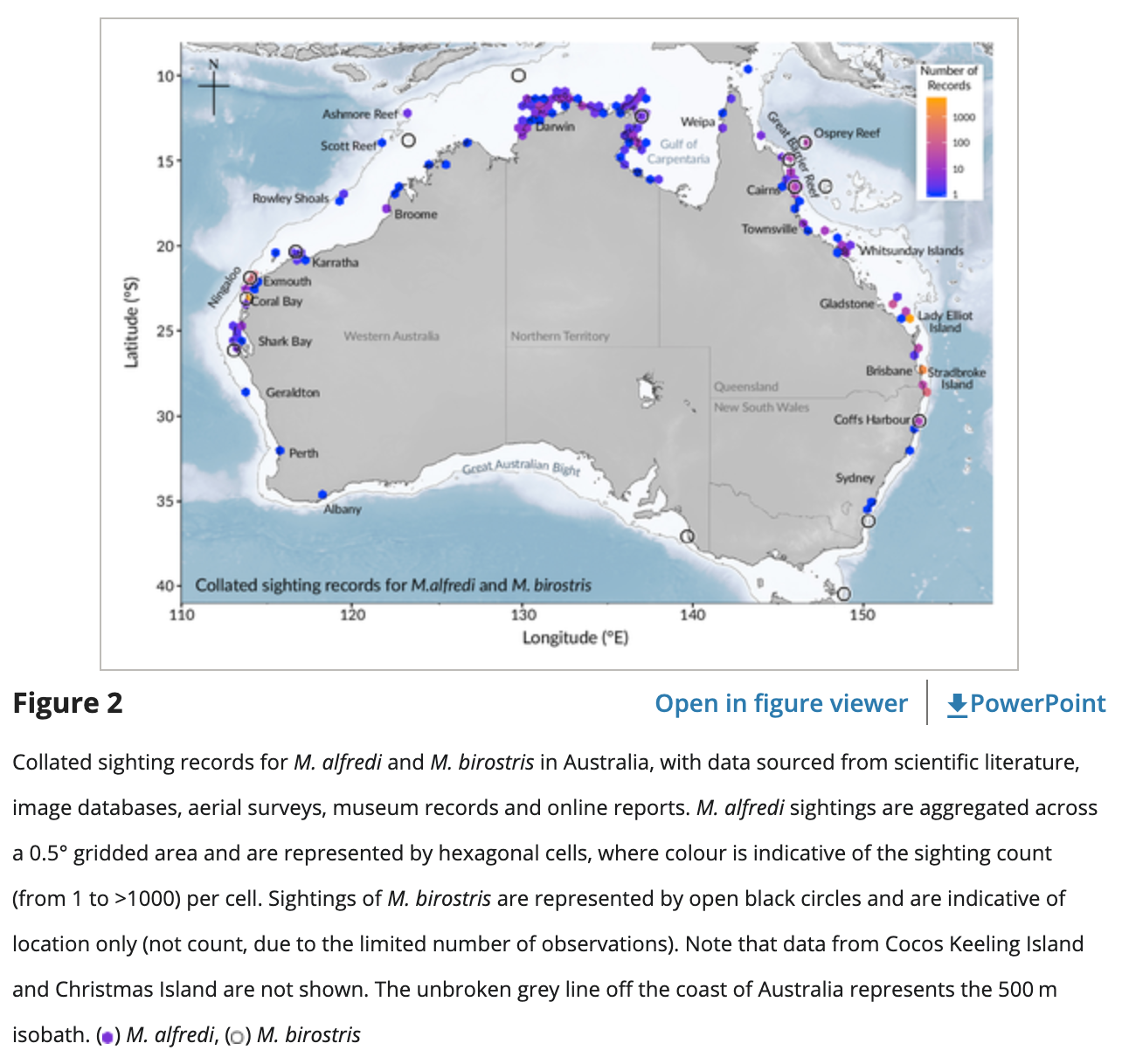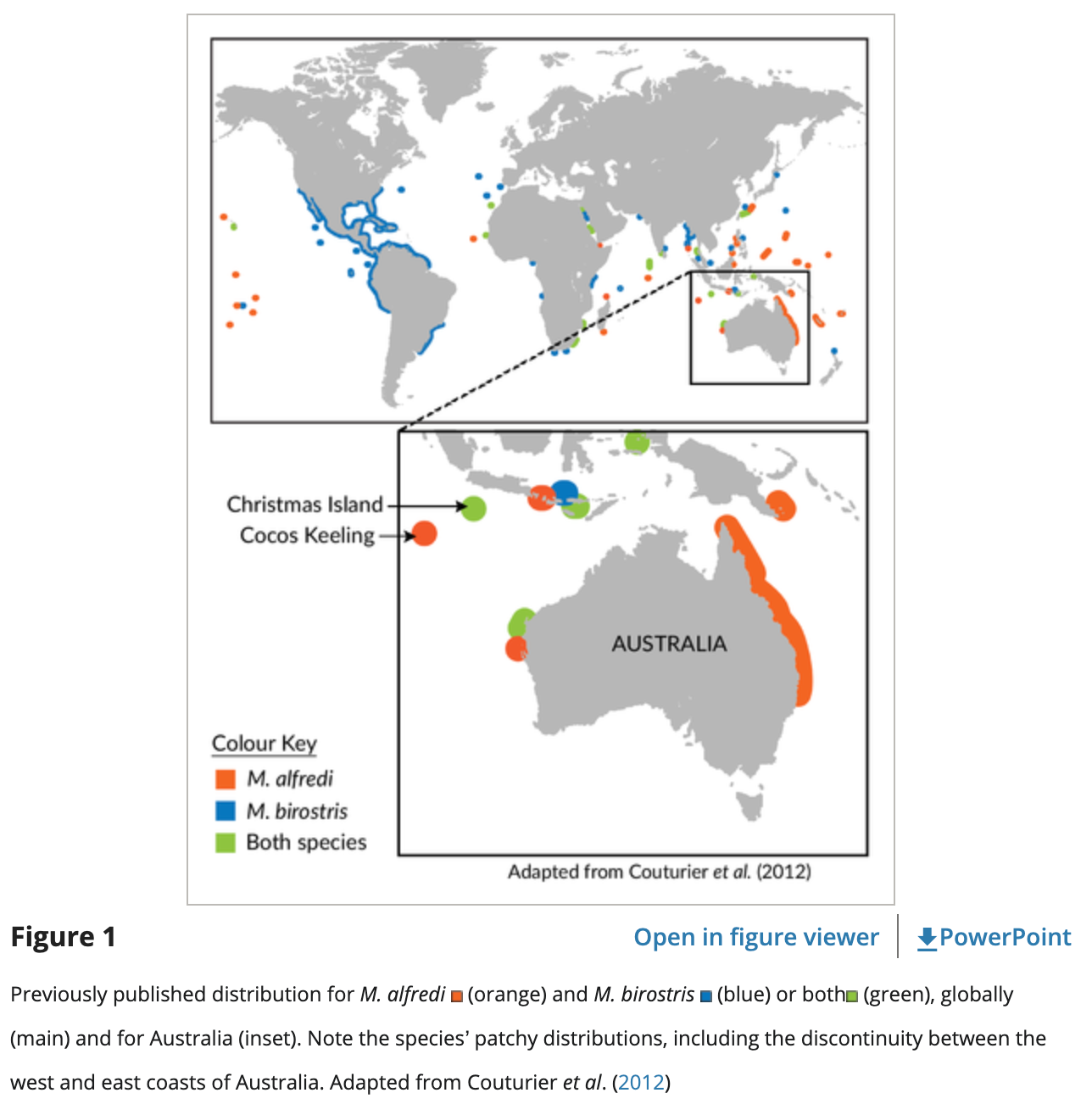The geographic distribution of reef and oceanic manta rays (Mobula alfredi and Mobula birostris) in Australian coastal waters
January 2020
Amelia J. Armstrong, Asia O. Armstrong, Michael B. Bennett, Frazer McGregor, Kátya G. Abrantes, Adam Barnett, Anthony J. Richardson, Kathy A. Townsend & Christine L. Dudgeon
Keywords: Citizen Science • Connectivity • Photo-ID • Reef Manta Ray • Species Distribution Range


Summary: The distribution of manta rays in Australian waters is patchy with most records coming from tourist hotspots. This study collected over 11,000 records of reef manta rays from photo-ID databases, aerial surveys, and online reports. The study confirmed an uninterrupted coastal distribution from north of 26°S and 31°S on the west and east coasts, respectively, with warm-water events extending to 34°S. Oceanic manta ray sightings were rare and preferred offshore waters, with a wider latitudinal extent of 10-40°S compared to reef mantas.
Abstract
“The known distribution of manta rays in Australian waters is patchy, with records primarily centred around tourism hotspots. We collated 11,614 records of Mobula alfredi from photo-ID databases (n = 10,715), aerial surveys (n = 378) and online reports (n = 521). The study confirms an uninterrupted coastal distribution from north of 26°S and 31°S on the west and east coasts, respectively. More southerly M. alfredi records relate to warm-water events with a southernmost extent at 34°S. Coastal sightings of Mobula birostris were rare (n = 32), likely reflecting a preference for offshore waters, but encompass a wider latitudinal extent than M. alfredi of 10–40°S.”
Author Affiliations
School of Biomedical Sciences, The University of Queensland
Coral Bay Research Station, Murdoch University
College of Science and Engineering, James Cook University
Centre for Applications in Natural Resource Mathematics, School of Mathematics and Physics, The University of Queensland
CSIRO Oceans and Atmosphere
School of Science and Engineering, University of the Sunshine Coast
Funded by
Austral Fisheries
Australian Research Council
Earthwatch Australia
Lady Elliot Island Eco Resort
Ningaloo Marine Interactions
TG Kailis Marine Conservation Fund
University of Queensland Research Scholarship
